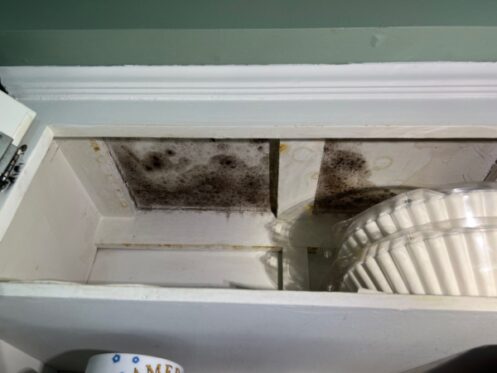As the popularity of electronic cigarettes (e-cigarettes) continues to rise, so do the concerns about their impact on indoor air quality. Many people consider e-cigarettes a safer alternative to traditional tobacco smoking. Still, it’s important to understand the potential risks of secondhand electronic cigarette aerosol (or “vape smoke”) and its effects on indoor environments.
All the recent news about the dangers of vaping has motivated us to help our community understand the risks and take steps to protect their health. The rise in vaping-related health problems, especially among young and vulnerable people, highlights the need for awareness and prevention. We want our readers to realize their role in making informed choices and creating safer indoor environments for their families.
What is secondhand electronic cigarette aerosol?
Secondhand electronic cigarette aerosol is the byproduct exhaled by e-cigarette users. Unlike traditional cigarette smoke, which comes from burning tobacco, e-cigarette aerosol is created by heating a liquid containing nicotine, flavorings, and other chemicals. The user then inhales and exhales this vapor, introducing various substances into the surrounding air.
Components of E-Cigarette Aerosol
E-cigarette aerosol contains several components that can affect indoor air quality, including:
- Nicotine: The primary addictive substance in e-cigarettes and traditional cigarettes can be harmful when inhaled secondhand, especially for children and people with respiratory conditions.
- Volatile Organic Compounds (VOCs): These chemicals can irritate the eyes, nose, and throat and cause headaches.
- Ultrafine Particles: Tiny particles that can penetrate deep into the lungs and enter the bloodstream, potentially causing respiratory and heart problems.
- Flavoring Agents: These make vaping more appealing, but some have been linked to respiratory issues when inhaled over long periods.
How does it affect indoor air quality?
E-cigarette aerosol can have several adverse effects on indoor air quality:
- Increased Airborne Contaminants
E-cigarette aerosol adds pollutants such as nicotine, VOCs, and ultrafine particles to the indoor air, which can degrade air quality and pose health risks to non-users. The tiny particles can get deep into the lungs, causing breathing and heart problems. VOCs can irritate the eyes, nose, and throat, and long-term exposure can cause serious health issues. - Health Risks for Vulnerable People
Secondhand aerosols can lead to severe respiratory and heart problems in children, pregnant women, seniors, and those with preexisting health conditions. Children’s exposure to nicotine and other harmful substances can significantly impact their developing lungs and brains. Older adults, who may already have weakened immune systems or chronic health conditions, are particularly vulnerable to the negative effects of these pollutants. - Long-Term Exposure
Unlike smoking, which is often done in designated areas, vaping can occur more freely indoors, leading to continuous and prolonged exposure to secondhand aerosol for other occupants. Over time, the chemicals and fine particles released by e-cigarettes can accumulate in the body, leading to chronic respiratory issues such as bronchitis and reduced lung function.Persistent exposure can also increase the risk of cardiovascular diseases due to the harmful substances like nicotine and heavy metals present in the aerosol. Additionally, there is growing evidence that long-term inhalation of these aerosols may contribute to the development of certain cancers.
How to Improve Indoor Air Quality
- Education: Inform e-cigarette and vape users about the potential risks of secondhand aerosol. Encourage them to quit or minimize exposure to others.
- No-Vaping Policies: You or someone in your household has given up vaping, but that doesn’t mean your guests will. Establish no-vaping rules at home to keep harmful aerosols out of your indoor spaces.
- A Designated Vaping Area: If vaping can’t be entirely banned from your house, set up a specific outdoor area for vaping, like a patio or deck, to minimize indoor exposure.
- Better Ventilation: Use exhaust fans, open windows, and air purifiers with HEPA filters to reduce airborne contaminants.
While e-cigarettes are often marketed as a safer alternative to traditional smoking, it’s important to remember that secondhand electronic cigarette aerosol can still pose a threat to indoor air quality. By understanding the composition of e-cigarette aerosol and taking steps to reduce exposure, we can create healthier indoor environments. At Pur360, we are dedicated to helping you maintain clean and safe indoor air, free from the harmful effects of secondhand aerosol and other contaminants.



